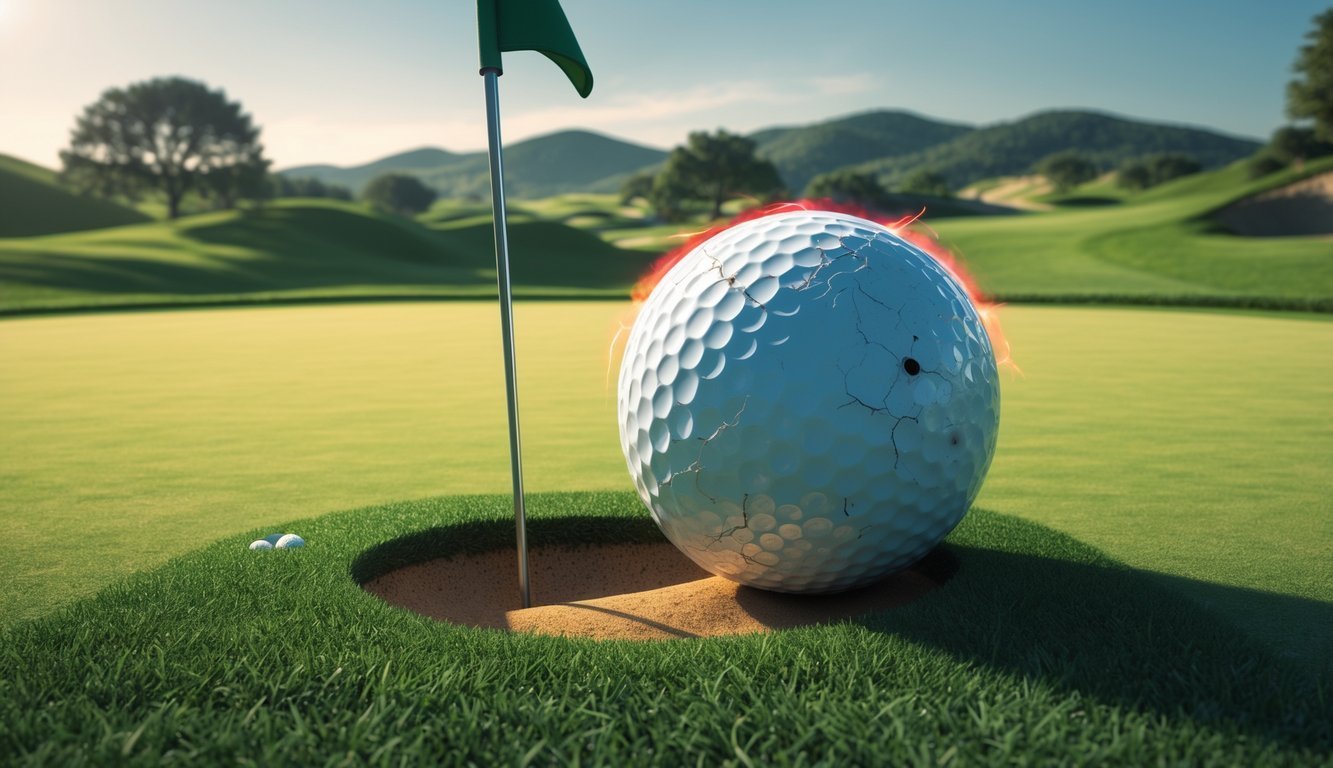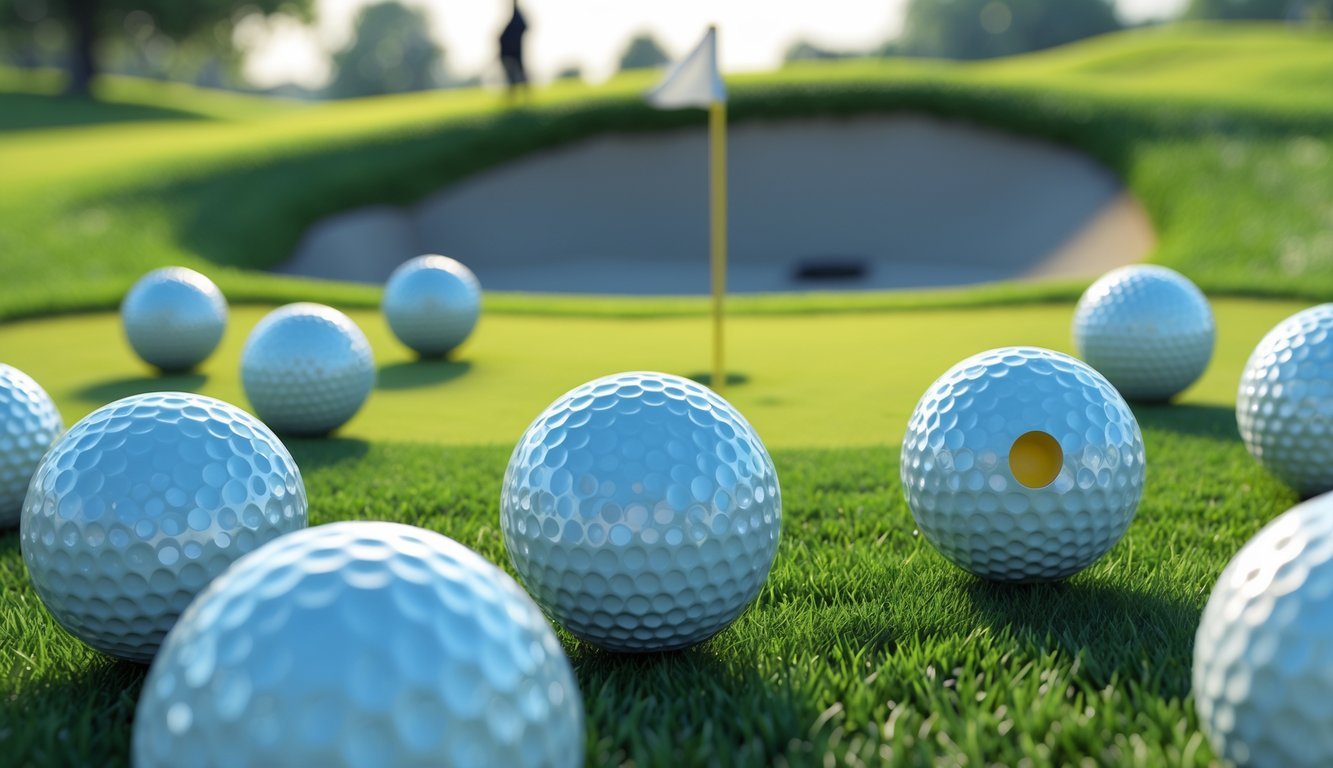PsychNewsDaily Publishers
100 Summit Drive
Burlington, MA, 01803
Telephone: (320) 349-2484
PsychNewsDaily Publishers
100 Summit Drive
Burlington, MA, 01803
Telephone: (320) 349-2484
Illegal golf balls do not meet USGA standards, enhancing distance or control but banned in tournaments. Brands like Polara and Bandit cater to casual players seeking performance.

Golf balls that break USGA rules are called illegal golf balls. Manufacturers make these balls to fly farther or straighter than the rules allow, which gives players an unfair edge.
Some illegal balls boost distance, while others focus on ball control. You can’t use them in official tournaments.
You might hear about illegal golf balls because some golfers buy them to get better scores when just playing for fun. Still, these balls break the basic rules set by golf’s main governing bodies.
If you’re curious about how illegal golf balls change your game and what to look out for, this guide covers it. Let’s talk about why companies make these balls, what the rules actually say, and what happens if you use one.

Illegal golf balls are built to help your game by flying farther or straighter than the rules allow. Designers use special materials and shapes to correct slices, hooks, or add distance that’s not legal in tournaments.
People also call illegal golf balls “non-conforming” balls. They don’t meet the United States Golf Association (USGA) or R&A rules. These rules limit size, weight, distance, and spin.
Some key differences:
Because of these features, you can’t use them in official tournaments. But lots of casual players like them for fun rounds.
Manufacturers use tech tricks to make illegal golf balls do special things. Some have a super reactive core that boosts speed and distance. The dimple design cuts down on drag, so the ball flies farther.
Many illegal balls use small ball technology (SB)—they’re smaller and lighter. That lets you swing faster and get less spin, which keeps the ball straighter.
Some, like the Polara line, correct your shots by using odd dimple patterns and special weight placement. They help keep your ball on track and reduce hooks and slices.
A few brands focus on illegal golf balls for different needs.
Each brand has its own naming style to show off features like spin control, size, or distance. If you see “SB,” it usually means a smaller ball. “Ultimate Straight” points to correction features.

Illegal golf balls can totally change how your game feels. You might hit longer or straighter shots, but the rules limit their use in official play.
Before you buy, think about how these balls perform, the legal risks, and what fits your style.
Illegal golf balls usually give you more distance and a quicker launch off the clubface. You might outdrive your usual ball, even something like a Pro V1.
Some are made for slower swing speeds—so senior golfers or folks with a smoother swing can get more distance and accuracy. They also help cut down on slicing and hooking, so your shots go straighter.
But illegal balls can feel weird, especially on short shots around the green. You might lose a bit of spin control or touch when putting.
The United States Golf Association (USGA) sets strict rules on golf balls for official tournament play. Legal balls must weigh 1.620 ounces or less and be at least 1.680 inches in diameter. They also have limits on initial velocity.
If you use an illegal ball, you get a competitive edge, but that’s not fair in tournaments. The rules exist to protect the integrity of the game, so illegal balls are banned in USGA events and almost all official matches.
If you want to try an illegal ball for fun or practice, think about your swing speed and what you want to fix. Balls that boost distance and give you a high ball flight can help slower swingers, including lots of senior golfers.
Stick with brands that clearly label their balls as non-conforming. Remember, you can’t use these in tournaments, so keep a separate set for casual play.
Here’s a quick checklist:
Pick what matters most for your game, not just what’s trending.

Golf balls come in all shapes, sizes, and materials, and that changes whether they’re legal or not. Some balls boost distance or accuracy but just don’t fit the official rulebook. Using them will definitely change the way you play.
Non-conforming golf balls break rules for size, weight, or performance set by the USGA. They might be too big, too light, or spin less than allowed. These differences make them illegal for tournaments.
Some golfers just want more distance or straighter shots. Non-conforming balls can help reduce slices and hooks, making your shots more reliable. If you’re struggling with accuracy or distance, these balls might tempt you.
Illegal balls have tweaks that make them fly farther or act differently. Pros use balls that pass strict testing before tournaments. If a ball isn’t approved, it’s off-limits for official play.
They sure can. You might hit longer drives or get more control, but these balls can also hide flaws in your swing. Relying on them might slow down your skill improvement.
You can use non-conforming balls for casual rounds or practice. They’re not allowed in tournaments or events with strict rules. For fun or a different challenge, go for it—just don’t bring them to official play.
Some brands make prototype or test balls that don’t follow the official rules, mostly for practice. You’ll sometimes see them labeled as “Test” or something along those lines.
Major brands rarely sell non-conforming balls directly to the public. Still, you might find special models out there, usually meant for advanced players or just practice sessions.